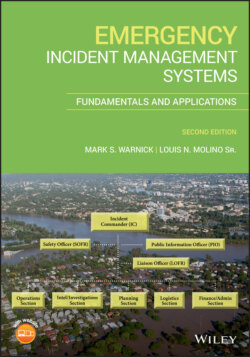Читать книгу Emergency Incident Management Systems - Mark Warnick S., Louis N. Molino Sr - Страница 66
3.2 Australia
ОглавлениеIn the 1980s, the Australian government created the Australian Inter‐Service Incident Management System (AIIMS). This was the first iteration of an IMS system in Australia. It closely mimicked the National Interagency Incident Management System (NIIMS) system in use by the US Forest Service and that was based on the IMS method of ICS.
In 1989, the Australian government enacted legislation called the State Emergency and Rescue Management Act. The legislation mandated that an IMS system should be developed for all disciplines within public safety. The first implementation of Australian Inter‐Service Incident Management System (AIIMS) method was sometime in 1991, and it implemented Incident Control System as the way to manage an incident. The Incident Control System was nearly identical to the USICS method, with one primary difference. The person in charge of an incident was not known as the Incident Commander (IC), but rather an Incident Controller (Turner, n.d.). In 2002, after hearing years of criticism that the system was fundamentally for the fire service, the Australian and New Zealand National Council for fire, emergency services, and land management undertook a revamping of the system to make it nonspecific to discipline type. While some changes were made, the system closely resembles ICS method used in the United States.
Sometime after the September 11 attacks, the US Fire Administration, in conjunction with United States Agency for International Development (USAID) began training Australians. This was done on‐campus at the National Fire Academy to assist them in getting advanced training on the US version of ICS. Specific individuals were chosen to attend the National Fire Academy in Emmitsburg, Maryland. With the ICS training from the National Fire Academy, Australian first responders began to adapt the Australian Inter‐Service Incident Management System (AIIMS) method to integrate with the ICS method. This ensured that whenever the Australian personnel worked with other agencies from around the world, they would be able to work nearly seamlessly with each other.
The latest iteration of the Australian Inter‐Service Incident Management System (AIIMS) method utilizing the Incident Control System is also compatible with the ICS method used in the United States. Much like the United States utilizes NIMS for integration of resources, and they use the ICS method to manage the incident, the Australians utilize AIIMS for the integration of resources and the Incident Control System to manage the incident. In recent years, the United States and Australia have seamlessly exchanged Incident Management Teams (IMTs) during eventful fire seasons. This integration from each other's country went smoothly, with relatively few problems.
Beyond the use of Incident Control System, another IMS method commonly used in the United States for healthcare facilities is the Hospital Incident Command System (HICS) to manage emergencies and disasters in hospitals. Similarly, the Australian healthcare system is closely mirrored to HICS, but it is called Hospital Incident Management System ([HIMS], n.d.). This IMS method allows hospitals to keep their basic hierarchy while still being able to integrate and be compliant with the larger IMS method for requesting external resources. In the case of Australia, the Hospital Incident Management System (HIMS) method integrates with the AIIMS method.
